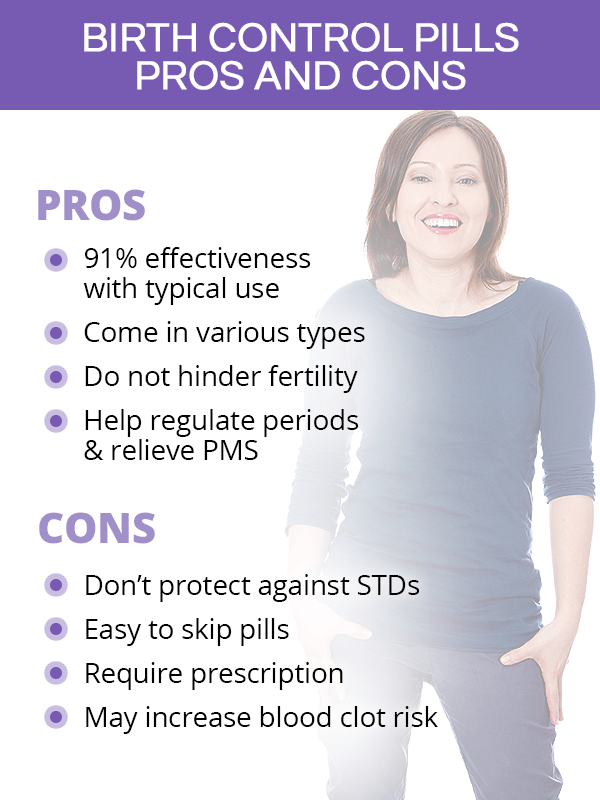The landscape of reproductive health brims with a plethora of birth control methods, catering to diverse preferences and needs. From permanent solutions like male and female sterilization to a variety of temporary methods including long-acting reversible contraceptives (LARC), barrier options such as diaphragms, and natural rhythm approaches, individuals have access to a breadth of choices. Understanding these options, including the birth control implant, IUDs, spermicides, and the female condom, is vital as each offers different benefits and potential birth control side effects.
As individuals navigate the complexities of selecting the most suited birth control method, factors such as lifestyle, health considerations, and personal comfort play pivotal roles. This article delves into the intricacies of each contraceptive, examines their effectiveness and utility, and provides guidance on how to align one’s choice with their reproductive goals. Planned Parenthood, along with other healthcare providers, offers resources to aid in informed decision-making processes, ensuring that choices concerning birth control methods and methods of contraception support overall well-being and reproductive health.
Exploring Different Types of Birth Control

When considering birth control, there are several categories to explore, each with its own set of methods. Here’s a breakdown to better understand the options available:
Permanent Solutions:
- Female Sterilization: Tubal ligation or occlusion.
- Male Sterilization: Vasectomy.
- Effectiveness: Almost 100%.
Long-Acting Reversible Contraceptives (LARC):
- Intrauterine Devices (IUDs): Last 3-10 years, inserted by a healthcare professional.
- Hormonal Implants: Also last 3-10 years.
- Effectiveness: Around 99%.
Short-Acting Hormonal Methods:
- The Pill/Mini Pills: Taken daily.
- Patch: Applied weekly.
- Vaginal Ring: Used monthly.
- Shot: Administered every three months.
- Effectiveness: 91-95% with consistent use.
Barrier Methods:
- Condoms (Male/Female): Also protect against STIs.
- Diaphragms, Sponge, Cervical Cap: Used each time during sex.
- Effectiveness: 71-88% with correct use.
Natural Rhythm Methods:
- Abstinence, Withdrawal: No protection from STIs.
- Fertility Awareness: Involves tracking fertile days via ovulation kits or monitors.
- Effectiveness: Varies widely based on correct use and consistency.
Emergency Contraception:
- Plan B, Ella Pills: For use after unprotected sex or contraceptive failure.
- Copper IUD: Can be used as emergency contraception.
- Availability: Over the counter for pills; IUD requires a healthcare professional.
Each method works differently, whether by preventing sperm from reaching the egg, stopping ovulation, or making it difficult for an egg to implant in the uterus. It’s crucial for individuals to consider their lifestyle, health, and comfort when choosing a method, and to consult with healthcare providers like Planned Parenthood for guidance. Remember, only condoms offer STI protection, making dual protection (condom use plus another method) a recommended strategy for sexually active individuals.
Read : Treatments & Home remedies to treat excess vaginal discharge
How to Choose the Right Birth Control Method for You

When choosing the right birth control method, it’s essential to consider your personal goals and lifestyle. Here are some factors to guide your decision:
- Personal Goals and Family Planning: Do you want children in the future? How soon? Certain methods like the IUD or birth control implant offer long-term prevention but are reversible when you’re ready to conceive.
- Lifestyle and Frequency of Sex: How often you have sex may influence your choice. For instance, the convenience of a daily pill versus a long-term vaginal ring or diaphragm might be a consideration.
- Health and Comfort: Evaluate any health concerns that may affect your choice, such as hormonal sensitivities, and choose a method you’re comfortable using, like the female condom or spermicides.
- Cost and Insurance: Consult with Planned Parenthood or your healthcare provider about the cost and what’s covered by insurance. Emergency contraceptive pills might be an over-the-counter expense, while other methods may have different cost structures.
Remember to discuss with a healthcare professional to receive personalized advice. They can provide information on effectiveness, manage concerns about birth control side effects, and help you weigh the pros and cons of different types of birth control. Your comfort with the method is paramount, as is how it fits into your current health and reproductive health goals.
Understanding the Effectiveness of Birth Control Methods

Understanding the varied effectiveness of birth control methods is crucial for making an informed choice. Here’s a breakdown of typical use failure rates for common contraceptives:
- Long-Acting Reversible Contraceptives (LARC):
- Levonorgestrel IUD (LNG IUD): 0.1-0.4%
- Copper T IUD: 0.8%
- Implant: 0.1%
- Short-Acting Hormonal Methods:
- Injection or “Shot”: 4%
- Combined oral contraceptives, Patch, Hormonal Vaginal Ring: 7%
- Barrier Methods:
- Male Condoms: 13%
- Female Condoms: 21%
- Fertility Awareness-Based Methods:
- Range: 2-23% depending on the specific method
- Permanent Methods:
- Female Sterilization (Tubal Ligation): 0.5%
- Male Sterilization (Vasectomy): 0.15%
- Special Circumstances:
- Lactational Amenorrhea Method: Highly effective if exclusively breastfeeding, within 6 months postpartum, and menstruation has not returned.
LARC methods like the IUD and birth control implant stand out for their high effectiveness due to minimal user intervention. In contrast, methods requiring frequent action, like pills or condoms, have higher failure rates due to the potential for inconsistent use. When considering birth control options, one should evaluate not only the effectiveness but also the lifestyle fit, potential side effects, and how frequently each method requires attention. Planned Parenthood and healthcare providers can offer guidance on the right contraceptive, considering these factors along with individual reproductive health goals.
Pros and Cons of Popular Birth Control Methods

When evaluating birth control options, weighing the pros and cons of popular methods is a critical step. Here’s a straightforward comparison to guide your choice:
The Pill (Combination Estrogen and Progestin):
- Pros:
- Seamless integration into intimate moments.
- Can improve menstrual symptoms and reduce acne.
- May lower the risk of certain reproductive cancers.
- Cons:
- No STI or HIV protection.
- Effectiveness can be compromised by certain medications.
- Daily commitment required.
Progestin-Only Pills, Implant, or Shot:
- Pros:
- Continuity of sexual activity without disruption.
- Non-estrogen options available for specific health needs.
- Some forms offer high effectiveness and quick fertility recovery post-removal.
- Cons:
- Possible irregular periods and spotting.
- Weight gain and cholesterol changes (shot).
- Bone density reduction (shot).
Intrauterine Devices (IUDs):
- Pros:
- Long-term protection with a single device.
- High efficacy in preventing pregnancy.
- Cost-effective over time.
- Cons:
- Initial costs can be high without insurance.
- May cause menstrual irregularities.
- Requires professional removal.
Remember, hormonal birth control methods like the pill are generally safe but can have side effects such as weight gain, headaches, and mood changes. It’s essential to consult a healthcare professional, like those at Planned Parenthood, to find the right method that aligns with your reproductive health needs. While methods like the diaphragm or female condom offer additional options, their effectiveness can vary. Emergency contraceptive pills provide a backup but are not a primary method of contraception. Breastfeeding may serve as a short-term birth control measure under specific conditions, yet it’s not reliable long-term. Each method’s side effects and health risks underscore the importance of personalized medical advice in your birth control journey.
Navigating Health Insurance and Birth Control Coverage
Understanding the landscape of health insurance and birth control coverage is crucial for making informed decisions about reproductive health. Here are key points to consider:
- Prescription and Coverage: While some birth control methods require a prescription, others do not. Health insurance plans often cover prescribed methods, and under the Affordable Care Act (ACA), most plans must offer birth control with no out-of-pocket costs when provided by an in-network provider.
- Insurance Plans and State Laws:
- All Marketplace health plans are mandated to cover contraceptive methods and counseling for women.
- As of May 1, 2022, 30 states require insurance plans to cover contraceptives, with varying coverage and cost-sharing requirements.
- Ten states and DC have laws that expand the ACA contraceptive coverage provision.
- Access and Enforcement:
- The Biden-Harris Administration has proposed rules to strengthen birth control coverage under the ACA.
- The Department of Health and Human Services (HHS), Department of Labor (DOL), and Treasury have issued guidance to remind plans of the ACA’s contraceptive coverage requirements, emphasizing their commitment to enforcement.
When exploring birth control options, individuals should consult with healthcare providers, such as Planned Parenthood, to understand the specific coverage for methods like IUDs, diaphragms, emergency contraceptive pills, female condoms, spermicides, and the birth control implant. Improved access to these methods of contraception can have significant impacts on women’s health and well-being, allowing them to better manage their reproductive health. However, it’s important to stay informed about potential threats to birth control coverage, as these could limit access to essential healthcare services.
Conclusion
Reflecting on the myriad birth control options, it becomes clear that the right choice balances personal comfort, lifestyle considerations, and health concerns. Our exploration of the vast array of methods, from permanent to temporary and hormonal to natural, emphasizes the importance of individualized decision-making when it comes to reproductive health. Whether one leans towards the dependability of long-acting contraceptives, the flexibility of the pill, or the non-invasive nature of barrier methods, the key lies in selecting a method that aligns with one’s current life stage and future family planning goals.
As conversations around birth control continue to evolve, so does the support available to those seeking guidance. Organizations like Planned Parenthood stand at the ready to assist in navigating these choices, offering personalized counsel and resources. For those looking to take the next step in their birth control journey, an informed discussion with a healthcare provider is invaluable. Remember, maintaining control over one’s reproductive health is more than just a personal matter—it’s integral to one’s overall well-being and autonomy. If further exploration is desired, consider reaching out to healthcare professionals who can provide guidance tailored to your unique circumstances.
FAQs
What factors should be considered when selecting the best birth control pill?
When choosing a birth control pill, it’s important to consider how well it fits into your lifestyle. Factors such as how convenient it is to use, its effectiveness, and the cost should be taken into account. You should gather information on the various birth control methods available, understand how they work, their prices, where to obtain them, and decide which one is the most suitable for you.
Which birth control methods are among the top three in terms of effectiveness?
The three most effective forms of birth control are Long-acting reversible contraceptives (LARCs), which include:
- The contraceptive implant, which is over 99% effective with perfect use and can last for up to three years, although it can be removed sooner if desired.
- The intrauterine system (IUS), also more than 99% effective.
- The intrauterine device (IUD), which is likewise more than 99% effective.
Is there a form of birth control that is 100% effective in preventing pregnancy?
Yes, the only form of birth control that is 100% effective in preventing pregnancy is abstinence. Abstinence is the practice of refraining from all sexual activity and genital contact, including vaginal, oral, or anal sex. By avoiding sexual intercourse entirely, there is no exchange of bodily fluids, such as vaginal secretions and semen, ensuring complete protection against pregnancy.
What is the only completely effective form of birth control in preventing both pregnancy and STDs?
Abstinence is the only birth control method that is 100% effective at preventing both pregnancy and sexually transmitted diseases (STDs). It involves never engaging in sexual intercourse, which is the only guaranteed way to avoid both pregnancy and the risk of STDs.


